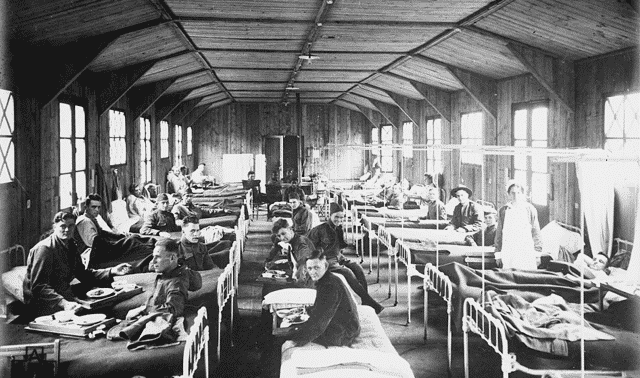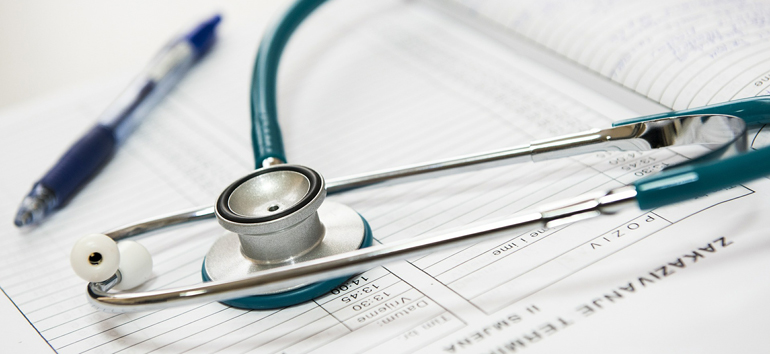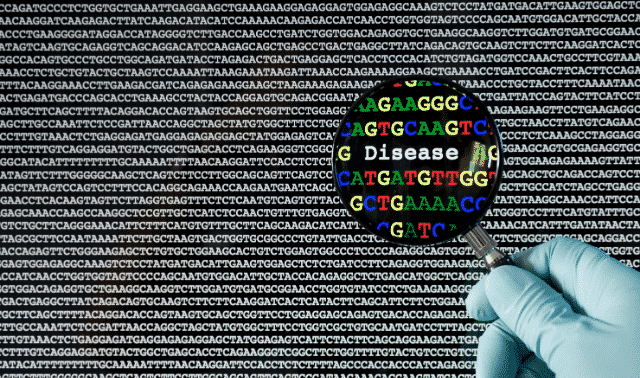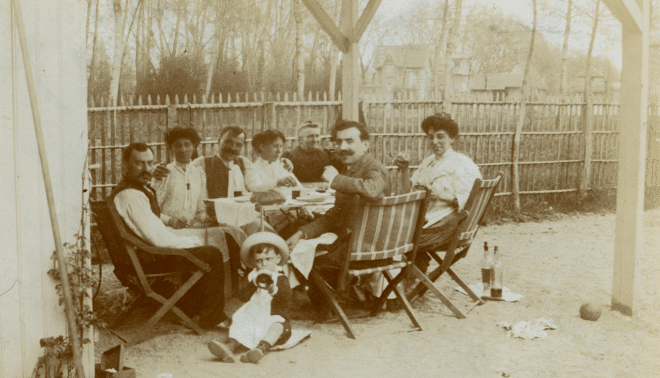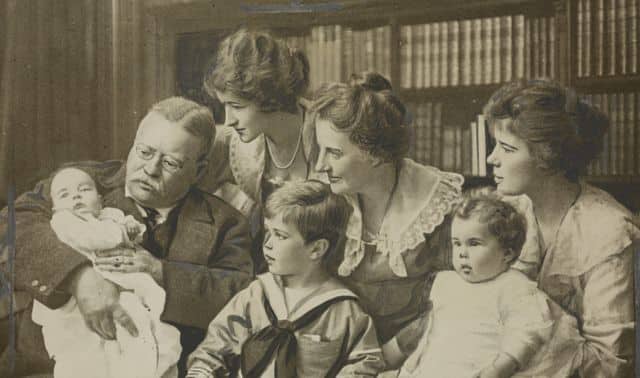Sign up for the Family Tree Newsletter Plus, you’ll receive our 10 Essential Genealogy Research Forms PDF as a special thank you!
Get Your Free Genealogy Forms
"*" indicates required fields
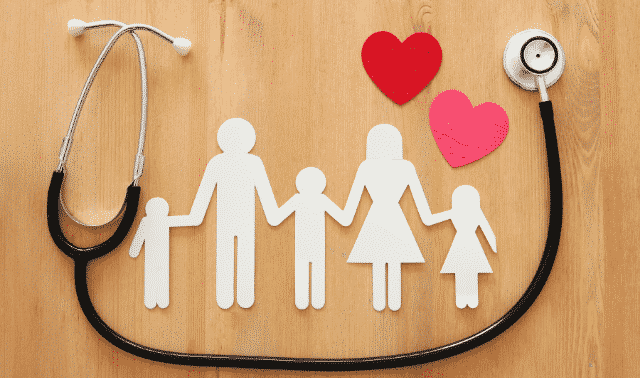
Researching your family medical history can help you and medical professionals protect your family’s health for generations. As many as half of all health problems may have a genetic component, passed down within families. According to the Mayo Clinic Health Letter, these include tendencies to heart disease, high blood pressure, diabetes, some cancers and certain psychiatric disorders.
Exploring your family’s health history is a lot like digging into genealogy. You still need to know who’s who and how they’re related. But you also need to discover hereditary health problems and causes of death. Here are nine steps to get started:
1. Interviewing
Start with your parents, siblings and their children. Then add data from and about grandparents, aunts, uncles and cousins. The more information you can gather, the better. Be sympathetic to and honor the need for privacy — requesting medical information requires diplomacy and sensitivity.
Some interviewing rules of thumb:
• Develop a list of questions and medical conditions you may be looking for.
• Focus on those branches and individuals who may be able to provide the key leads for expanding your search.
• Never assume anything. People often don’t know or can’t remember their exact medical condition. Check and double-check. Ask for permission to talk to family doctors or anyone who’s been involved with the family’s health. This is particularly relevant when tracking genetic traits that can be a potential disaster for future generations, since not all family members may recognize or accept the implications of the trait they carry.
• Enlist the help of others in the family — particularly family members who are doctors — and other medical professionals who understand and support your research.
Information on any medical ailment may prove useful. Pay special attention to serious conditions such as cancer, high blood pressure, heart disease, diabetes, depression and alcoholism. Be sure to also jot down your relative’s age when an illness was diagnosed.
Family health questions to ask
- Are there any unusual traits?
- Were there miscarriages or stillbirths?
- Was anyone extremely obese or thin?
- Who suffered from major diseases?
- Did anyone have reconstructive surgery?
- Who was hospitalized, for what and how long?
- Did cousins marry cousins?
- Did anyone abuse alcohol or drugs?
- Did anyone suffer from recurring maladies, such as allergies (and to what), headaches and others?
2. Death certificates
An attending physician usually provides the primary cause of death and contributing factors on a death certificate. Ask your relatives about medical conditions, when the deceased first got sick, how long the illness lasted, the duration of the hospital stay, and so on. There could be more to the story than the death certificate indicates. For instance, my father’s death certificate gives his cause of death as “heart failure,” but he suffered from diabetes-related kidney failure and was on dialysis. You’ll also run across “old age” as a cause of death, which should lead you to ask more questions.
3. Obituaries
Carefully reading an obituary can help identify useful medical facts. Look for clues such as where to send donations, which may list a medical foundation. Don’t assume, however, that a specific foundation relates directly to the person’s illness.
4. Cemetery and funeral records
Using a map of Chicago’s Waldheim Cemetery, Stanley Diamond was able to locate the gravestones of two immigrant family members, first cousins who married each other. With the help of a cemetery staff member, Diamond contacted the man responsible for the graves’ perpetual care — who turned out to be his cousin, Alex, also diagnosed as a Beta-Thalassemia carrier. This breakthrough let Diamond trace the genesis of the trait back one more generation in Poland.
5. Mortality schedules
These will probably be helpful only if your family came to America before the massive wave of immigration that began about 1880. The federal government kept these lists between 1850 and 1885; they included information on cause of death for 12-month periods before each census (June 1-May 31,1849,1859,1869,1879, 1884), organized by state. Not all deaths are represented, but the schedules are worth consulting, especially if you have no other vital records. You can find them in state archives, the Daughters of the American Revolution Library in Washington, DC, the National Archives in Washington, DC, and the Family History Library in Salt Lake City and its Family History Centers.
6. Insurance records
As you rummage through family papers and interview relatives, note any information you may find about insurance policies and the insurance company. Though the information may be difficult to obtain, the company might hold more detailed medical facts worth a written inquiry.
7. Military service and pension records
Why might a family member have been rated “4F” in World War II? Did he receive any special compensation as a result of an injury? Checking service and pension records can be illuminating.
8. Hospital and doctor records
You may be able to get medical information if you know the name of a recently deceased family member’s physician and the hospital where he or she died. Many institutions keep records for seven to 10 years, but you may need special permission to access them. Even if this doesn’t apply to you right now, it’s a good idea to start keeping track of physician and hospital names associated with each family member. In Texas, for instance, medical record requests are guaranteed under state law, including access to records of deceased or incompetent patients; a parent, spouse or adult child making the request in writing must be accommodated.
9. Previous genetic testing results
Have any family members been tested before? If so, obtaining the results of those tests can be extremely helpful to your history.
Creating a medical pedigree
Once you’ve collected your family’s medical facts, you’ll need to organize and document your findings. Even if you’ve already put together your family’s genealogical pedigree, you’ll want to be able to present a “medical pedigree” to your health professional.
A medical pedigree uses standardized symbols to indicate gender and relationships (biological and non-biological, for instance). Names are not necessary and you generally don’t have to include more than three or four generations. It is important, though, to show brothers and sisters, who typically don’t show up on a standard genealogical pedigree. Charting your family’s medical conditions can help you and your doctor visualize the patterns that can sometimes get lost in lists of names, dates and places.
One format is the genogram, a popular clinical tool for assessing connections between family members and illness. Dr. Monica McGoldrick, co-author of Genograms: Assessment and Intervention (W.W Norton Co.), explains, “When there is a genogram in the medical record, the clinician can glance at it and get an immediate picture of the family and medical situation without wading through a stack of notes. Indication on the genogram of previous illnesses or symptom patterns may lead to early detection of a problem and preventive treatment of family members at risk.”
Several genealogy software programs also contain fields where you can input medical information. Family Tree Maker, for instance, allows you to document any individual’s medical information. Another software program, Cyrillic 3, specializes in charting for medical purposes — it even calculates breast cancer risks.
DNA Testing
Knowing your family medical history is important before undergoing genetic testing to learn more, says Dr. Doris Teichler Zallen, a genetics expert at Virginia Tech and author of Does It Run in the Family? A Consumer’s Guide to DNA Testing for Genetic Disorders (Rutgers University Press). “The health problems experienced by older family members may herald the kinds of health problems that younger members of the family may face,” says Zallen. “Layers of confusion may need to be penetrated before the real family medical history becomes clear and a pattern emerges that points to the possible involvement of a susceptibility gene.”
No one has a perfect collection of genes. We all have some mutations in our DNA — the deoxyribonucleic acid that stores our genetic information. Experts estimate that each of us has about eight genes where changes have occurred that could severely impair our health. But a change in DNA doesn’t necessarily translate into a genetic disorder. It depends on where the gene is located, what it does, and how well surrounding genes function.
In June 2000, a massive academic scientific effort, The Human Genome Project, and a private project by the Celera Corp. jointly announced that they had achieved a “rough draft” of a map of the human DNA blueprint. “Genome” is a term used to describe the total genetic material contained in a full set of an organism’s chromosomes. In humans, the genome consists of two sets of 23 chromosomes, with each set containing 3 billion chemical units.
Genetic testing to look for flaws in a person’s genome generally falls into four categories:
• Direct testing can find specific mutations or alterations in the gene’s DNA.
• Linkage testing assesses the likelihood that a form of the gene has been inherited along with the “marker,” a reference point that distinguishes one DNA pattern from another.
• Susceptibility testing looks for a gene whose presence can increase the chances of developing a health problem later in life.
• Carrier testing, a very difficult process, is currently available for Tay-Sachs, Thalassemia, sickle cell disease and hemophilia.
Still got Grandma’s lock of hair or Grandpa’s pipe? Being able to provide samples of stored tissue or even tumors can help find a susceptibility gene, even if today’s DNA tests became available only after a person’s death. Stored tissue is critical if linkage testing is being considered in families where the affected members have died.
Genetic testing is done at three stages: prenatal, presymptomatic and premarital. Prenatal testing helps to find diseases that affect children, such as Tay-Sachs. Presymptomatic testing is conducted for conditions that predispose you to illness, such as prostate or breast cancer, because these diseases run in families. For instance, 5-10 percent of all breast cancer is inherited, meaning that one in every 200 women is at risk for an inherited form; testing is done for two different genes that account for 70-80 percent of these cases. Premarital testing is perhaps the most controversial but can help avoid potential problems and harmful family legacies.
Ultimately, according to Dr. Robert Desnick, chair of the Department of Human Genetics at Mt. Sinai Hospital in New York City, the ability to predict a genetic disorder may translate into the ability to prevent it.
Life-saving sharing
As you learn more about your family’s genetic makeup, your information should be shared widely within your family and with your medical practitioners. “Directing family members to medical professionals who are trained to communicate the appropriate information is the responsibility of every family historian charting his or her family’s medical history,” says Diamond.
Diamond’s outreach efforts have turned up families other than his own who carry the Beta-Thalassemia trait among Eastern European Jews and other populations for whom it’s unusual. Some of these families have already launched their own programs to alert relatives to the potential dangers for future generations.
Reba Solomon of Plainview, NY, is one of those who contacted Diamond and followed his lead. She wrote family members, “We have just learned that a rare blood trait is carried genetically within our family, inherited either through Ephraim Presant or Faiga Gensil. Many of their children, grandchildren and great-grandchildren carry the trait of Beta-Thalassemia. This blood mutation is so rare, we are only the 13th European-Jewish family in the world to be identified with the trait.” She went on to urge them to check previous blood tests to determine likely carrier status.
“Knowledge is power,” says Phyllis Goldberg of Rockville, Md. When her grandson was born with Fanconi Anemia — a genetic disease associated with small stature, bone marrow failure, congenital malformations and a predisposition to leukemia — she vowed to locate every member of her family at risk. Goldberg believes she has traced the disease to her paternal great-grandparents from Austria-Hungary. She is now hoping to work within the Fanconi Anemia support community to find the mutation’s geographic roots.
Reaching out to others who share an affliction can give you support, comfort and information. More than 100 volunteer health organizations have been formed to raise awareness and raise funds for research, ranging from the Alzheimer’s Association to the United Parkinson’s Foundation.
Another useful activity is to enroll in a registry so genetic researchers can find you and your family. A registry collects information on families with a certain medical condition or genetic disorder. It keeps track of affected family members and those who are at risk.
Often people wait for diagnosis of a serious illness to start asking questions about their family’s background. Don’t delay — you’ll be providing a great service to your family and the medical community.
It may even save your life. Nancy Sparks Morrison of Roanoke, Va., recalls tracking down her connection to the Melungeons, a people of Mediterranean descent who settled in the Appalachians in the 1500s. She discovered that the Melungeons are prone to a genetic ailment, Familial Mediterranean Fever. “If I had not found the Melungeon connection to my family, and thereby my inherited illness,” says Morrison, “I would be dead now.”
Health and heritage
Working within a specific self-contained genetic community delights geneticists, much as it does genealogists, because it makes traits and patterns easier to identify. Here are some examples:
Amish — Dr. Alan Shuldiner, medical director of the Joslin Center at the University of Maryland Medical System, has been working with the Amish community in Lancaster County, Penn., since 1993 to learn more about the genetic origins of diabetes. “While diabetes does not occur more frequently in the Amish than in other population groups, the Amish are a closed population with a fixed gene pool and have very large families and essentially complete genealogies dating back 14 generations,” he says. The study has been expanded to assess thyroid conditions, osteoporosis and longevity.
Polish Jews – To aid his search for carriers of his family’s Beta-Thalassemia trait, Stanley Diamond began an initiative that’s grown into a nonprofit organization known as Jewish Records Indexing-Poland, an Internet-based database of Jewish vital records in Poland. This database is helping geneticists and Jewish families, particularly those at increased risk for hereditary conditions and diseases, trace their medical histories. Diamond’s work has provided geneticists with the greatest number of generations ever reconstructed in the study of Beta-Thalassemia trait in an isolated gene pool. Dr. Robert Burk, professor of epidemiology at the Albert Einstein College of Medicine at Yeshiva University, is studying prostate cancer in the Jewish population as principal investigator of the Cancer Longevity, Ancestry and Lifestyle project. “Through the establishment of a searchable database from Poland, careful analysis of the relationship between individuals will be possible at both the familial and the molecular level,” says Burk. “This will afford us the opportunity to learn not only more about the Creator’s great work, but will also allow researchers new opportunities to dissect the cause of many diseases in large established pedigrees.”
Icelandic — In 1996 Decode Genetics launched a controversial project to build a database of all known Icelanders for the past 1,100 years. Eventually it aims to include more than 700,000 individuals — half of all the people who’ve ever lived in the isolated island nation. Relatively homogeneous, Icelanders have also been meticulous record-keepers. But the project has raised ethical issues about the privacy of genetic information.
Acadian – In August 1999 the Louisiana State University Medical Center organized a conference, “Genetics of the Acadian People,” to create an awareness of the unique genetic history of people from the former Acadia region in eastern Canada. Acadians are at increased risk for some genetic diseases, which can range from 35-250 percent higher among Acadians and Cajuns than the national average. The Acadians were French settlers who were exiled from Canada in the 1750s; Cajuns are their descendants who settled in Louisiana.
The most common genetic diseases
Heart disease: coronary atherosclerosis, high blood pressure, hyperlipidemia
Diabetes
Cancer: retinoblastomas, colon, stomach, endometrium, lung, bladder, breast, skin (melanoma)
Neurological illnesses and disorders: Alzheimer’s disease, amyotrophic lateral sclerosis (Lou Gehrig’s disease), Gaucher’s disease, Huntington’s disease, multiple sclerosis, neurofibromatosis, Parkinson’s disease, Tay-Sachs disease, Tourette’s syndrome
Mental illnesses and behavioral conditions: alcoholism, anxiety disorders, attention deficit disorder, eating disorders, manic depression, schizophrenia
Other genetic diseases: cleft lip and cleft palate, clubfoot, cystic fibrosis, Duchenne muscular dystrophy, galactosemia, hemophilia, Hurler’s syndrome, Marfan’s syndrome, phenylketonuria, sickle cell disease, Thalassemia
Medical conditions with genetic links: arthritis, asthma, baldness, migraine headaches, obesity, periodontal disease, speech disorders
Tip: To translate antiquated names for diseases and ailments, see this glossary of medical terms from the 18th and 19th centuries.
A version of this article appeared in the October 2000 issue of Family Tree Magazine.
Related Reads
ADVERTISEMENT

